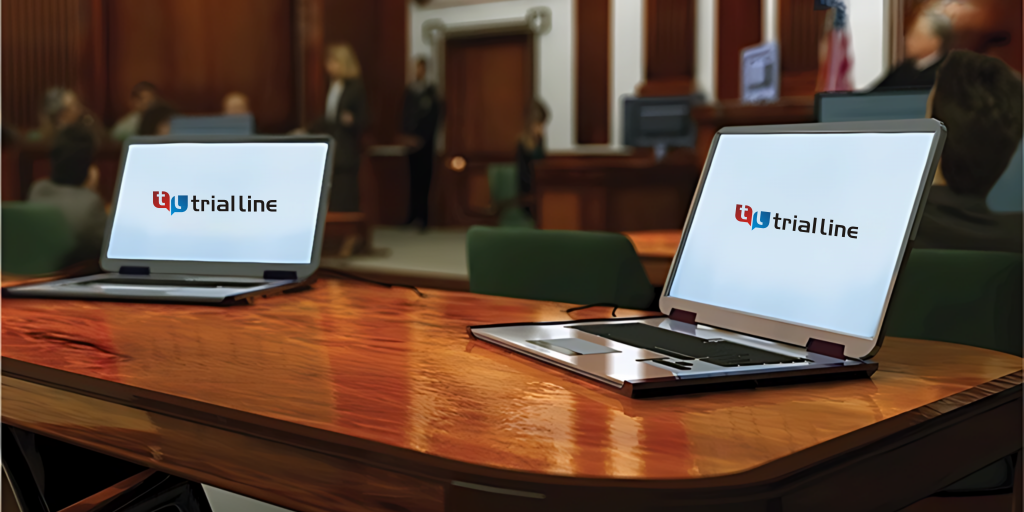Attorneys rely on powerful trial presentations for courtroom success.
Attorneys rely on powerful trial presentations for courtroom success.
Blog Article
How Trial Presentations Enhance Your Argument and Convince Jurors
Test discussions function as a critical mechanism for improving legal debates and encouraging jurors. By incorporating aesthetic aids, narrative structures, and psychological engagement, lawyers can develop a compelling situation that reverberates on several degrees. The critical use visuals not just makes clear intricate details but also catches jurors' interest better than words alone. Nevertheless, the art of storytelling plays a similarly essential function in changing accurate proof into an engaging narrative, shaping jurors' perceptions - trial presentations. Recognizing these aspects can dramatically impact test outcomes, raising the question of exactly how each part adds to this detailed dynamic.

Importance of Visual Help
Visual help play an essential duty in boosting the effectiveness of trial presentations, as they can dramatically enhance target market interaction and retention of information. In the context of a trial, where jurors are charged with handling facility details, aesthetic aids offer to streamline and clarify bottom lines. Graphes, graphs, and photos can communicate data and principles that may otherwise overwhelm or puzzle jurors, enabling a much more straightforward understanding of the evidence provided.
In addition, aesthetic aids help in preserving juror attention throughout the proceedings. By breaking the monotony of spoken statement, these devices can stress important disagreements, making them a lot more memorable. Reliable visual help can likewise stimulate emotional reactions, which can be essential in encouraging jurors to line up with the speaker's story.

Crafting Compelling Narratives
A compelling story is vital in test presentations, as it acts as the foundation of reliable persuasion. It allows lawyers to weave together realities, evidence, and psychological elements into a coherent tale that resonates with jurors. This narrative framework makes it possible for jurors to comprehend the complexities of the case while leading them with the attorney's disagreement.
To craft a compelling narrative, lawyers need to concentrate on clearness and comprehensibility. This involves developing a clear protagonist-- commonly the client-- and describing their trip with the events in inquiry. Offering the truths in a logical series improves understanding and keeps involvement. In addition, the usage of brilliant descriptions can develop mental pictures that assist jurors picture the occasions, making the narrative a lot more unforgettable.
In addition, incorporating crucial styles throughout the presentation strengthens the core message and help in retention - trial presentations. The narrative should not just communicate information but likewise stimulate a sense of justice, highlighting the stakes entailed. Ultimately, a well-constructed narrative fosters a connection in between the jurors and the case, placing the attorney's debate as both credible and engaging, thus enhancing view publisher site the likelihood of a favorable judgment

Engaging the Court Emotionally
Reliable jury interaction pivots on the lawyer's capacity to get in touch with jurors on a psychological degree. This connection can dramatically influence jurors' assumptions and their supreme decision-making. Using psychological allures allows attorneys to humanize the instance, transforming abstract legal principles right into relatable experiences. By providing real-life tales or testimonies, lawyers can evoke empathy and concern, promoting a much deeper understanding of the concerns at stake.
Visual help, such as pictures or videos, can further enhance psychological interaction, offering jurors with brilliant representations of the situation's human elements. Crafting a narrative that highlights the struggles and triumphs of the people involved makes sure that jurors see beyond the legal arguments and acknowledge the human effects of their decisions.
Moreover, tone and body movement play a crucial duty in communicating emotion. A lawyer's enthusiastic shipment can resonate with jurors, reinforcing their emotional financial investment in the situation. It's vital to balance psychological charms with factual evidence, making certain that jurors feel obliged to act while continuing to be grounded in the fact. Eventually, an emotionally engaged jury is a lot more likely to be encouraged, making psychological link an important component of effective trial presentations.
Structuring Your Presentation

The body of the presentation should be realistically fractional into essential factors, each sustained by compelling evidence. It is advantageous to utilize narration techniques to weave realities right into a narrative that jurors can easily comply with. Aesthetic aids, such as charts and video clips, can improve comprehension and engagement, aiding to highlight vital items of proof.
Real-World Study
Checking out real-world situation studies offers invaluable understandings into the art of test discussions and persuasion. The protection group effectively employed a technique that incorporated high-profile specialist testimonies with multimedia presentations, which mesmerized jurors and inevitably affected their choice.
One more significant instance is the "McDonald's Coffee Case," where the plaintiff's attorneys made use of graphic images of the injuries endured by Stella Liebeck. trial presentations. This stark aesthetic proof played a critical duty in sharing the extent of her burns, causing a considerable jury company website honor. Such instances demonstrate that impactful trial presentations typically rest on the effective assimilation of visuals and storytelling to stimulate emotional reactions from jurors
Additionally, the "Casey Anthony Trial" highlighted the significance of narrative comprehensibility and reliability. The prosecution's failure to establish an engaging timeline lessened their influential power, emphasizing the requirement of a well-structured presentation. Assessing these cases exposes that successful trial presentations require calculated preparation, psychological involvement, and the capacity to resonate with jurors' values and beliefs.
Verdict
Trial discussions substantially improve debates and persuade jurors with the calculated use of aesthetic help, engaging stories, and emotional involvement. A well-structured discussion equilibriums emotional charms with valid evidence, inevitably resonating with jurors' worths.
Report this page